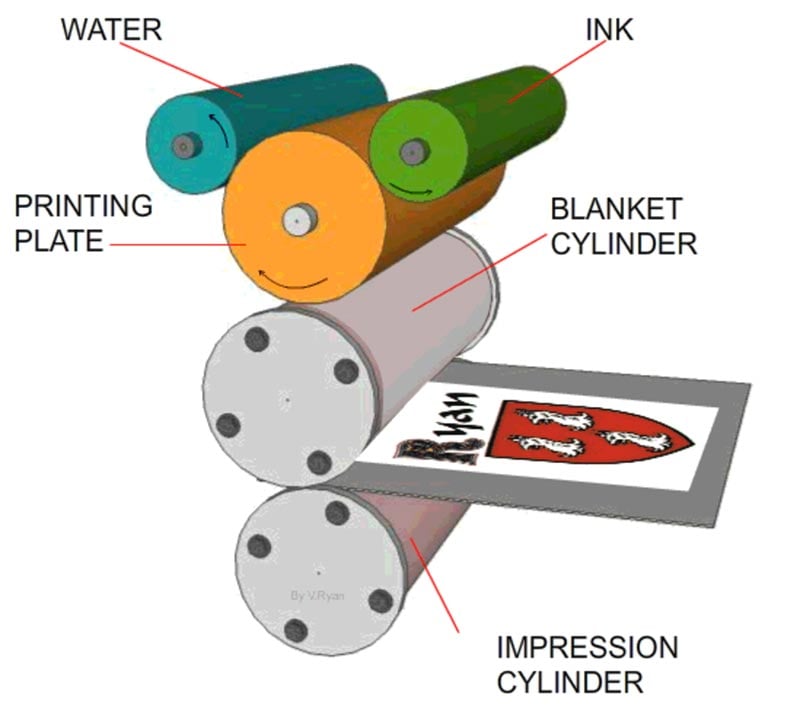Why litho printing Is Ideal for Large Print Runs
A Comprehensive Guide to Recognizing Litho Printing Methods
The globe of litho printing, a method stemming from the late 18th century, is a remarkable blend of background, scientific research, innovation and art. Stay with us as we trip into the exciting realm of litho printing.
The Historical Development of Litho Printing
The historic trajectory of litho printing, a critical innovation in the world of interaction, is a captivating tale of human resourcefulness. The procedure progressed with the arrival of the rotating press, which significantly enhanced performance. Each phase of litho printing's evolution showcases humankind's relentless quest of effectiveness and top quality in aesthetic communication.
Deciphering the Science Behind Litho Printing Inks
Progressing in the expedition of litho printing techniques, the focus currently moves to the science behind litho printing inks. The composition of these inks, their drying out process, and shade mixing techniques create the foundation of this complicated art kind. Comprehending these aspects is critical to grasping the craft and attaining the wanted print results.
Structure of Litho Inks
In lithographic printing, the fundamental function of litho inks can not be overstated. Pigments, the color-providing elements, are finely ground fragments put on hold in the vehicle, a liquid that lugs the pigment onto the printing surface. Each component plays an important component in the final print's quality, making the precise formula of litho inks a detailed scientific research.
Ink Drying Refine
From the structure of litho inks, focus turns to the fascinating process of ink drying out. The drying procedure is important, as it impacts the last print's quality and durability. Two primary techniques are utilized in litho printing: oxidative drying out and absorption. Oxidative drying includes the ink reacting with oxygen airborne to form a difficult, completely dry film. This approach gives a durable finish, but can be slower contrasted to absorption. Absorption, on the various other hand, includes the ink seeping right into the paper fibers, which is a much faster procedure but can result in much less dynamic colors. The selection between these techniques depends on variables such as print speed demands, the paper type made use of, and the wanted coating.
Color Combining Methods
While the drying out process plays an essential role in litho printing, the scientific research of shade mixing methods holds equal value. The scientific research behind litho printing inks additionally takes into account the openness of the ink, which impacts just how shades overlay and mix.
The Art and Layout Components in Litho Printing
Litho printing breathes life right into art and style through its unique elements. The procedure includes developing a picture on a lithographic sedimentary rock plate or metal plate with a smooth surface. The image is then published onto a tool, generally paper, by transferring the ink from the plate. Home Page What sets litho printing apart is its capacity to reproduce intricate layouts with high integrity, making the output practically the same to the initial artwork. This is attained via using various line methods such as stippling, hatching, and cross-hatching, which permit a series of tonal results. Furthermore, litho printing accommodates a selection of shades, making it possible for artists to create vibrant and lively prints. This combination of precision and versatility makes litho printing a recommended selection for lots of artists and designers.
Modern Applications of Litho Printing Techniques
Litho printing techniques have actually located comprehensive use in the contemporary industrial market. Its impact and relevance remain to expand with the arrival of new advancements and modern technologies in the field. This area will explore these contemporary applications and the transformative duty they play in the printing sector.
Industrial Litho Printing Utilizes
Litho printing continues to be an essential component of the business market. High-volume printing jobs, such as the manufacturing of books, newspapers, and product packaging, depend on litho printing for its capacity to supply premium image high quality and cost effectiveness. Litho printing additionally offers a broad shade range, superior to that of electronic printing.
Developments in Litho Printing
Pushing the boundaries of standard strategies, modern developments have fueled a host of technologies in litho printing. One popular development is digital litho printing, which incorporates the merits of digital modern technology with litho's top quality output. These technologies highlight the enduring relevance of litho printing in the modern-day world.
Discovering the Refine of Litho Printing: Detailed

Challenges and Solutions in Contemporary Litho Printing

Regardless of the precision and custom that litho printing proudly maintains, it is not without its collection of modern challenges. The most prevalent concerns consist of the high first setup price, problem in printing variable data, and environmental problems as a useful reference result of chemical usage. Options visit this page are emerging as innovation advances. Digital litho printing enables for cost-efficient short runs and easy modification, resolving the issue of variable data. Environmentally-friendly inks and more secure plate-making procedures mitigate ecological worries. In addition, improvements in automation have lowered labor expenses, better democratizing the lithography procedure. Hence, while there are challenges, the litho printing market is proactively adapting to satisfy them head-on, guaranteeing its relevance in the future.
Final thought
In conclusion, litho printing, with its rich background and clinical complexities, holds a substantial place in the print sector. The future of litho printing pivots on its ability to adjust to these transforming needs, verifying its long-lasting value in a progressing market.
